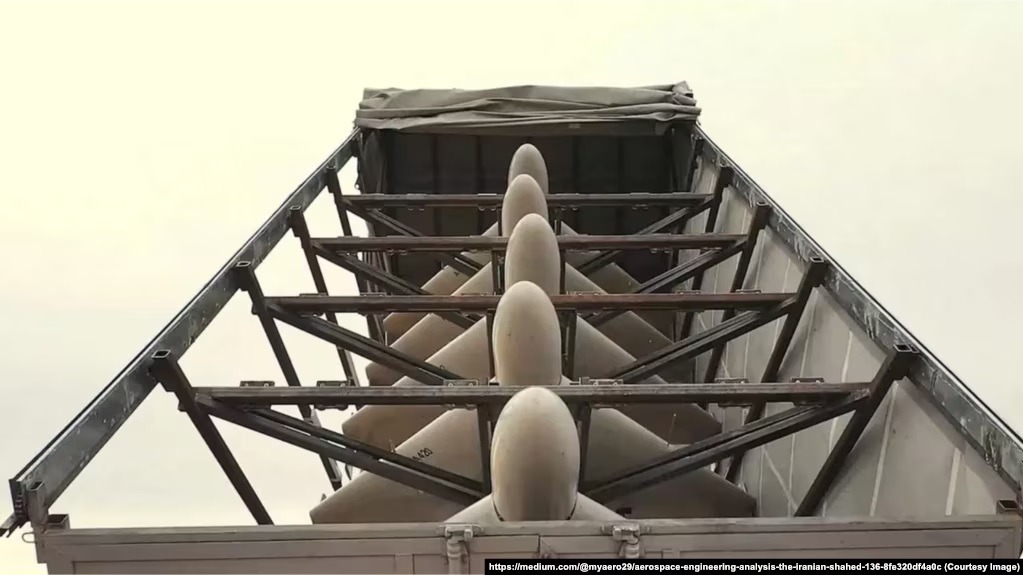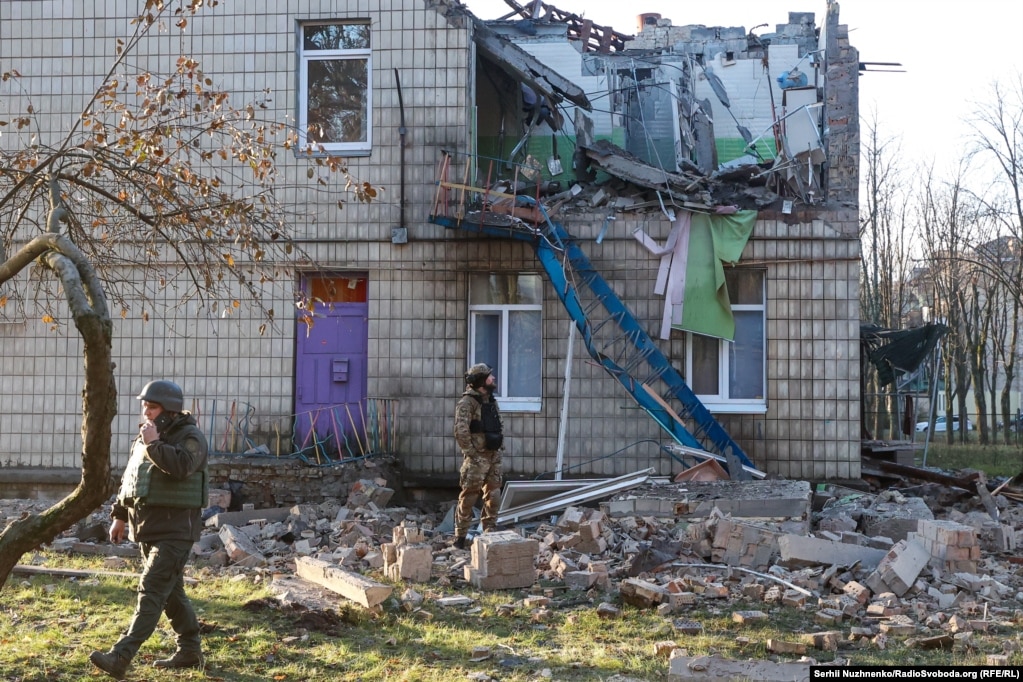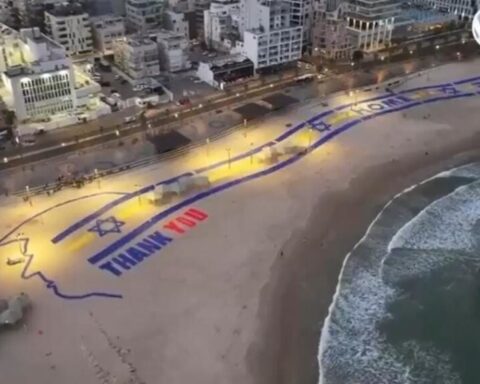Iran fired scores of drones and cruise and ballistic missiles on Israel in an unprecedented attack against its archfoe.
Among the drones used in the April 13 assault, according to Iranian state-run media, were the Iranian-made Shahed-136 and Shahed-131s.
The primitive suicide drones have been used by pro-Iranian militant groups in the Middle East. Tehran has also been accused of sending them to Russia for use in the war in Ukraine.
Are The Drones Effective?
The Shahed-136 and Shahed-131 “kamikaze” drones are cheap but effective, according to experts. Built with off-the-shelf components, the drones have attracted derisive monikers such as “lawnmowers” and “mopeds” due to the sound of their engines in flight.
But the low-flying drones, which are maneuvered to crash into their target, have proven themselves capable of hitting their mark both in terms of military effectiveness and cost.
“It is capable of extracting or delivering attrition and damage when launched,” said Samuel Bendett of the Virginia-based Center for Naval Analyses.
John Krzyzaniak, a research associate at the Wisconsin Project on Nuclear Arms Control, said Iranian drones like the Shahed-136s can “wreak havoc” if fired in large numbers.
What Is Their Range?
The estimated operational range of the Shahed-136 varies, but Iran says it is capable of traveling up to 2,500 kilometers.
That put Israel, which is located about 1,000 kilometers from Iran, within striking distance. The Israeli military said Iran had fired around 170 drones, all of which were intercepted.
The slightly smaller and older Shahed-131 has been estimated to have a range of 900 kilometers.
Launched in 2021, the Shahed-136 can fly a maximum speed of only around 185 kilometers per hour, making it susceptible to interception. Its payload capacity — around 50 kilograms — is also limited.
Does Iran Have Other Drones?
Iran has become a prolific drone producer in recent years. It also produces more advanced combat drones, including the Mohajer-6 as well the Shahed-129 and Shahed-191.
Jeremy Binnie, a Middle East defense specialist at the global intelligence company Janes, described the Shahed-129 as a “long-endurance surveillance and attack” drone.
The Mohajer-6 drone is capable of carrying out both reconnaissance missions and aerial strikes within a range of 200 kilometers. The stealth drone, Binnie said, is used “for penetrating well-defended airspace.”
In 2022, Iran inaugurated a drone factory for its Ababil-2 strike and reconnaissance drone in Tajikistan, Tehran’s first production facility abroad.
Who Else Is Using Iranian Drones?
Iran is increasingly deploying its drones beyond its borders. Experts say Tehran has employed them during reconnaissance, sabotage, and attack missions in the region.
Iran has also supplied drones to its proxies in the Middle East, including militant groups in Iraq, Syria, and Yemen.
The Iran-backed Huthi rebels in Yemen claim to have launched drones at Israel in recent months. Pro-Iranian militias in Iraq and Syria, meanwhile, launched drone attacks on U.S. forces. Analysts say the drones have made these groups more unpredictable.
Iran has been accused of sending thousands of Shahed-129 and Shahed-191s to Russia, boosting Moscow’s deadly air campaign in Ukraine. Tehran and Moscow deny the allegations.
U.S. officials have repeatedly accused Tehran of supplying Shahed-136 drones that Russia has used to destroy civilian infrastructure in Ukraine. There has been evidence of Iranian drones rebranded as Russian Geran-2s being used on the battlefield.
The Islamic republic has also been accused of selling combat drones to the army in Sudan, which is embroiled in a devastating civil war.















